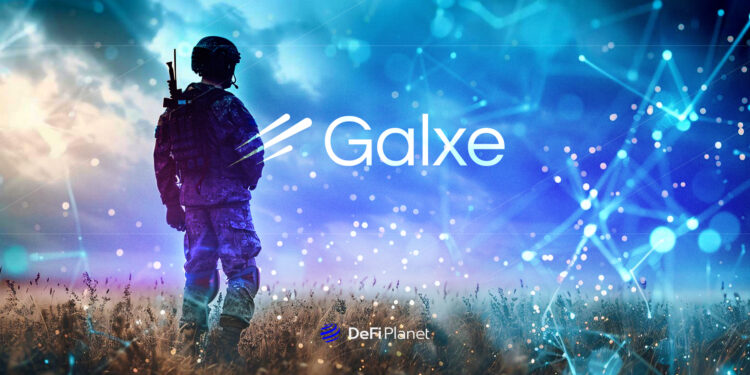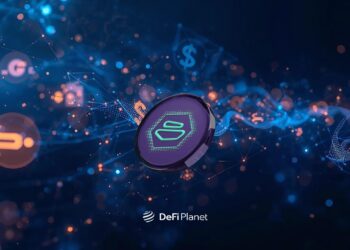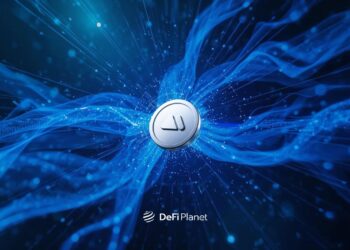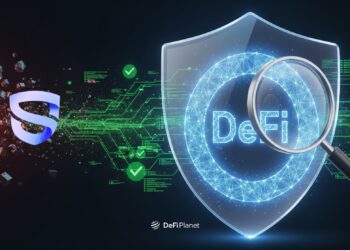Last updated on June 26th, 2025 at 11:15 am
The rapid growth of Web3 has created a pressing need for scalable, efficient, and user-friendly blockchain infrastructure. Existing networks often struggle with high fees, slow transaction speeds, and limited interoperability, making it difficult for projects to scale and for users to engage seamlessly across multiple platforms.
To address these challenges, Galxe introduced Gravity, a high-performance Layer 1 blockchain built to support decentralized applications and credential-based systems. Gravity improves data integrity, streamlines credential verification, and enhances interoperability across Web3.
In this article, we explore how Gravity works, what problems it solves, and what makes it best-suited to solve them. We also point out the problems it doesn’t solve and the ones it might create. Let’s get to it.
How Galxe’s Gravity Works
Galxe’s Gravity is a purpose-built Layer 1 blockchain designed to power a more efficient and interoperable Web3. Built with speed, identity security, and cross-chain capabilities in mind, it serves as the infrastructure layer underpinning Galxe’s growing suite of credential-based and engagement products.
It operates on a Jolteon Consensus, a custom Proof-of-Stake (PoS) mechanism that enables sub-second transaction finality while maintaining decentralization.
At its core, Gravity combines several technical components. It leverages Zero-Knowledge Proofs (ZKPs) to verify information without exposing sensitive data. This cryptographic method reduces the computing burden of transaction validation while maintaining strong security—ideal for data-heavy dApps and identity services.
Gravity is fully EVM-compatible, allowing developers to deploy and interact with existing Ethereum-based smart contracts without extensive modifications. It extends this compatibility with the Reth Execution Layer, an optimized Ethereum client that increases throughput and reduces latency for dApp performance.
By combining these tools, Gravity acts as both a high-throughput settlement layer and a connective tissue across blockchain ecosystems. Developers can trigger transactions across multiple chains within a single UX flow—without relying on bridges or wrapping assets.
Gravity’s native token is called $G and since it is a PoS system, holders can stake the token to help secure the network while earning rewards. But it doesn’t stop there. Gravity also integrates with restaking protocols like Babylon and EigenLayer, allowing users to stake their tokens across multiple security layers. This approach not only strengthens the network but also unites a diverse group of validators, making the chain more resilient against attacks.

What Makes It Different and What It Offers the Ecosystem
While many Layer 1s tout performance or interoperability, Gravity packages these with a credential-native identity layer—positioning itself not just as a transactional chain, but a service hub for real Web3 utility.
Here’s what sets Gravity apart:
Native Cross-Chain Functionality
Unlike traditional Layer 1s that rely on third-party bridges, Gravity enables multi-chain execution as a first-class feature. This simplifies asset flows and dApp logic for developers, reducing attack surfaces and technical debt.
It has integrations with protocols like Symbiosis Finance and other chains like Soneium to support advanced cross-chain functionality.
Built-in Identity Infrastructure
With Galxe Passport integrated at the base layer, Gravity offers privacy-respecting identity primitives out of the box. This unlocks on-chain credential verification, loyalty systems, and real-world reputation mechanics—all without requiring users to dox themselves.
Blockchain wallets can be tricky to use, often requiring long seed phrases for security. Gravity enhances user experience by supporting cryptographic primitives like the secp256r1 curve through precompiled contracts.
In simple terms, this allows users to log in and authenticate using passkeys instead of complicated wallet passwords. It also improves Account Abstraction wallets, making crypto transactions feel as seamless as using a regular online account.
Improved UX with Gas Abstraction
Gravity lets developers sponsor gas or batch transactions, so users don’t have to worry about holding multiple tokens. This lowers the friction for onboarding and supports Web2-like experiences that mainstream users expect.
Seamless Developer Onboarding
Gravity is EVM-compatible, which means Ethereum developers can migrate apps or build new ones with minimal changes. Combined with fast finality and high throughput, it provides a low-barrier, high-reward environment for developers.

The Problems It Doesn’t Solve—and the Ones It Might Create
Gravity is not a silver bullet. While it addresses core challenges in cross-chain infrastructure and user experience, it also introduces new questions around scalability, security, and fragmentation.
It Doesn’t Eliminate Layer 1 Redundancy
Web3 is already crowded with high-performance chains. Established platforms like Ethereum dominate smart contract execution, while Layer 2 solutions such as Arbitrum and Optimism provide cost-effective alternatives.
Gravity may offer refinements—but it enters a saturated field where chains like Solana, Avalanche, and Sui already promise speed and scale. Without a killer application or novel economic incentive, it risks becoming “just another chain.”
Performance vs. Resilience
Sub-second finality and 1 gigagas/second throughput are impressive—on paper. High transaction speeds and seamless cross-chain execution require robust infrastructure. So sustaining those speeds at scale, with real-world demand and multiple rollups, can introduce bottlenecks or validator risks. Any lapse in performance or downtime could damage trust early on.
Validator and Restaking Complexity
Gravity aims to secure itself through $G staking and integrations with restaking protocols like EigenLayer or Babylon. While this adds redundancy, it also creates dependencies on external systems that are still evolving—and themselves unproven at scale.
UX Improvements Rely on Adoption
Passkeys, gasless transactions, and simplified onboarding all depend on developer integration and wallet compatibility. Without full ecosystem buy-in, these features risk being underused or unevenly distributed across dApps.
Regulatory and Identity Tradeoffs
Handling credentials and identity at the chain level introduces a regulatory grey zone. Although Galxe Passport is privacy-first, the association with verified identity data could draw attention from regulators—especially in jurisdictions with data privacy laws.
Security Concerns
Security is another major concern. Blockchains handling sensitive credential data and financial transactions must be resilient against exploits, hacks, and malicious actors. Any vulnerabilities in Gravity’s consensus mechanism or smart contract execution layer could lead to security breaches, loss of funds, and reputational damage. Gravity must implement rigorous security measures and undergo regular audits to mitigate these risks.
Can Gravity Shift the Infrastructure Landscape?
Gravity represents a sharp pivot from generalized blockchains toward purpose-driven infrastructure. By focusing on credential-native identity, seamless UX, and omnichain interoperability, it targets the long-underserved need for better data, smoother onboarding, and composability across ecosystems.
Its strongest advantage? Galxe’s existing traction. With millions of users already engaged in quests, loyalty systems, and ID tools, Gravity doesn’t need to start from scratch. It can instantly offer real utility and feedback loops, making it more than a theoretical chain.
Galxe has launched a $50 million ecosystem fund to support developers in building user-centric applications and subsidiary blockchains on Gravity.
Galxe has also committed a $50M fund to support developers in building user-centric applications and subsidiary blockchains on Gravity. It’s rare for a new chain to launch with both funding and a live user ecosystem.
But success will hinge on execution. If Gravity can maintain its technical edge, win over developers, and deliver true multi-chain experiences without compromising security, it could play a major role in shaping Web3’s next phase.
Gravity won’t replace Ethereum or Solana, but it doesn’t need to. Its likely future is as a middleware layer that powers identity, engagement, and credential verification across chains. In a world of fragmented chains and disconnected UX, that’s a role worth betting on.
Disclaimer: This article is intended solely for informational purposes and should not be considered trading or investment advice. Nothing herein should be construed as financial, legal, or tax advice. Trading or investing in cryptocurrencies carries a considerable risk of financial loss. Always conduct due diligence.
If you would like to read more articles like this, visit DeFi Planet and follow us on Twitter, LinkedIn, Facebook, Instagram, and CoinMarketCap Community.
Take control of your crypto portfolio with MARKETS PRO, DeFi Planet’s suite of analytics tools.”





















